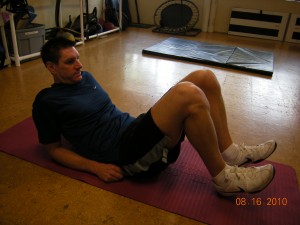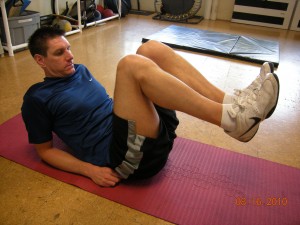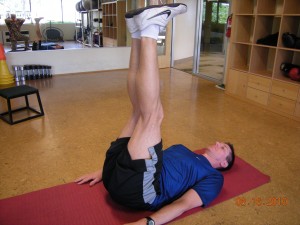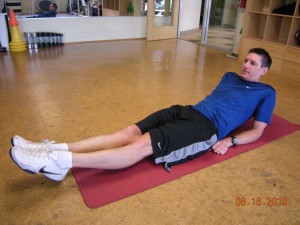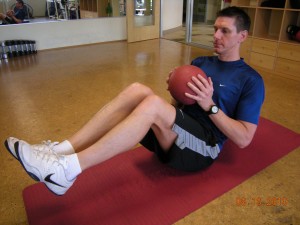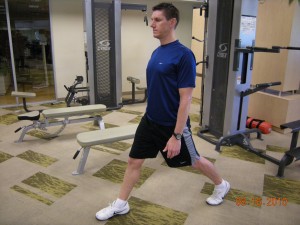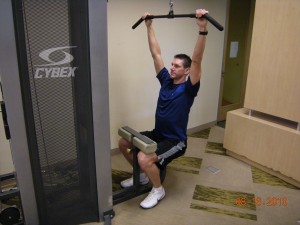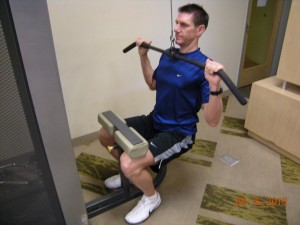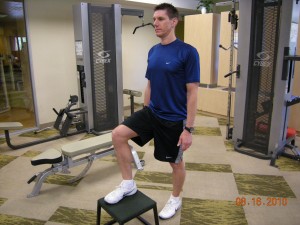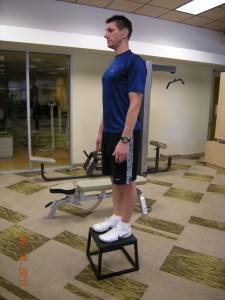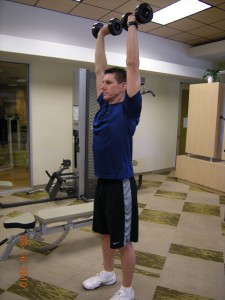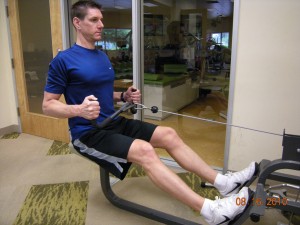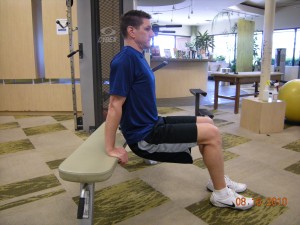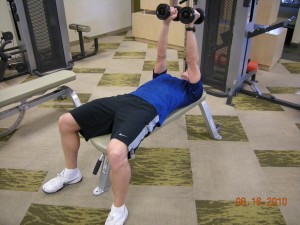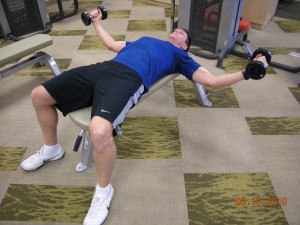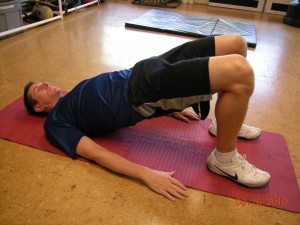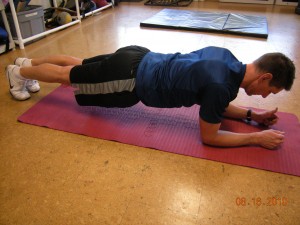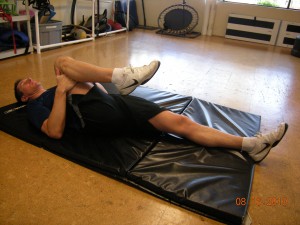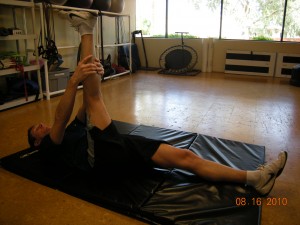
Reverse Crunch
The Reverse Crunch will help you to reestablish your ability to contract you abdominal muscles. It will also help to increase the strength of your lower abs. Start in a lying position on your elbows Bend your knees to 90 degrees. Leave your heels on the ground and lift your toes. Before you start to lift your legs off the ground you need you go into a posterior pelvic tilt. If you were wearing a belt, tilt your pelvis back so that belt buckle would get closer to your belly button. Your lower back should flatten out into the floor a little. Hold that pelvic tilt position during the entire exercise. Now lift your heels off the floor until your shins are parallel to the floor. Then slowly lower your feet back to the floor. If you lose the pelvic tilt, reset it before performing the next repetition. If this exercise is easy you are probably not maintaining the pelvic tilt. If your stomach or chest bows forward, that is a sign that you are losing the pelvic tilt.
Elevations
This is a more dynamic abdominal exercise. Start in a lying position with your hands by your side. Lift your legs so that they are perpendicular to the floor; straight up and down. From that position lift your hips, knees and heels straight up toward the ceiling.
In the “Finish” photo I exagerated the hip lift so you can see that your hips should be coming off of the floor. In reality you want to avoid having your feet move forward toward, or over your head. Your hips should only lift about 1-3 inches off of the floor. If this is easy you are probably swinging your legs a little too much. Return to start position and repeat.
.
Abdominal Leg Circles
For this exercise there are three position. Please check the third picture below for this description to make sense. Start in the same position as the Reverse Crunch. Set your pelvic tilt. Extend your legs out straight and lift your feet a couple of inches off the ground. With out touching the ground slide your heels along the floor toward your hips. Then straighten your legs and lower your straightened legs back to the start position. After completing one set use the same exact positions but rotate your feet in the opposite direction.
Lift your straight legs off of the floor unilt your legs are perpindicular to the floor. Bend your knees, then press your heels away from your body. Back to the starting position.
Medicine Ball Twist
Balance on you tailbone (boat pose/coccyx balance). Hold a medicing ball in both hands. Keeping it close to your body rotate your shoulders as far as you can. Rotate in both directions.
A common mistace is to have very little shoulder rotation and to move the ball from side to side with your hands.
The obliques, the muscle we are trying to strenghten with this exercise rotate the trunk/spine. So if we want to strenghten them properly our shoulders must turn.
Add these four abdominal exercises to your daily routine. Do them at the same time as the four Core exercises that I introduced in Tip #9. Build up to doing two sets of each. 25 Repetitions each for the Reverse Crunch and Elevations. 15 Leg Circles in each directions. And do as many Medicine Ball Twists as you can.
Watch the video below to learn more on how to perform these exercises correctly. I’ll be back tomorrow with Tip #23
[youtube]http://www.youtube.com/watch?v=8vcF8qYZZGw[/youtube]
